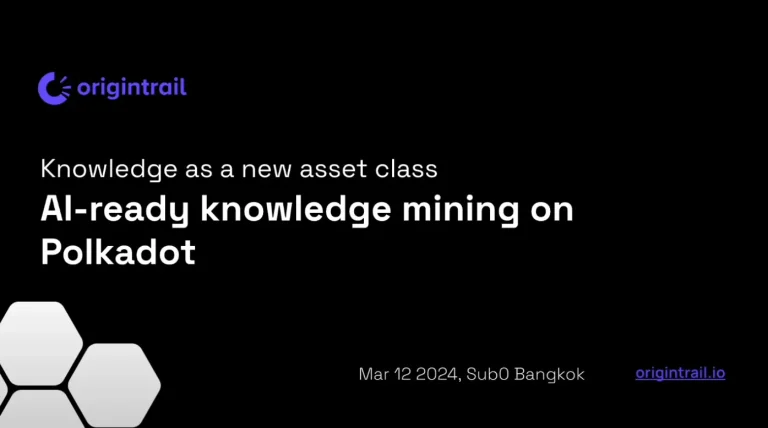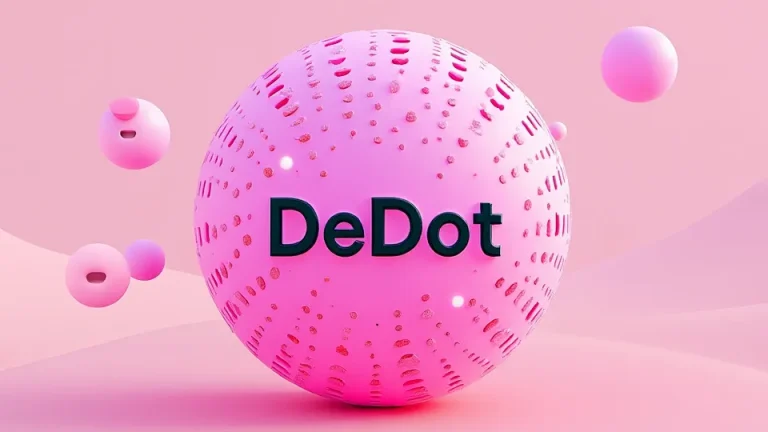In a landmark keynote address at the Web3 Summit, Dr. Gavin Wood, the founder of Polkadot and former Ethereum co-founder, presented a comprehensive vision for Web3 citizenship and digital individuality. The presentation, which took place at the Web3 Summit event, delved deep into the philosophical and technical underpinnings of what Wood terms “Web3 citizenship ideology.”
The Concept of Web3 Citizenship
Wood began by defining citizenship in the context of Web3, emphasizing that it is fundamentally a property of individuals, not machines, ideas, or organizations. He stressed the universal nature of citizenship, drawing parallels with nation-state citizenship while highlighting the unique challenges and opportunities presented by the digital realm.
“Citizenship is about belonging to a broader collective on the basis of being a person,” Wood explained. He emphasized that in the Web3 context, citizenship must be designed with privacy, scalability, and resilience in mind, particularly given the increasingly adversarial nature of the digital world.
Digital Individuality Mechanisms (DIMs)
A significant portion of the keynote was dedicated to explaining the concept of Digital Individuality Mechanisms (DIMs). Wood introduced three such mechanisms, though he only elaborated on the first one, dubbed “DIM1” or “Proof of Ink.”
Proof of Ink: A Tattoo-Based Approach to Digital Individuality
DIM1, or Proof of Ink, involves individuals getting a unique tattoo design, generated using on-chain entropy, at a specific location on their body. The process includes:
- Evidence Collection: A final three-minute video of the tattooing process.
- Evaluation: Open scrutiny of the evidence.
- Judgment: A deterministic vote by existing citizens (those who have already proven their individuality).
Wood acknowledged the potential challenges posed by advancing AI technologies in creating fake evidence but expressed confidence in the system’s robustness for the near future.
Web3 Citizenship Technological Foundations
Wood outlined several technological innovations that underpin the Web3 citizenship concept:
- Relay Chain PubSub: Enables quick and cheap data publishing between parachains.
- Ring VRF: A zero-knowledge proof-based cryptographic primitive.
- Transaction Extension: Allows for privacy-preserving proofs instead of traditional signatures.
- Bulletin Chain: A decentralized, secure data storage system integrated with XCM.
- People / Individuality Pallet: Core infrastructure for registering and utilizing the concept of individuality.
- Vouchers Pallet: Enables unlinkable treasury payments.
These technological advancements aim to create a system that is privacy-preserving, scalable, and resistant to Sybil attacks.
Web3 Citizenship Incentives and Use Cases
Wood elaborated on various incentives and use cases for the Web3 citizenship system:
- Participation in “mob rule” voting for validating new citizens.
- Pan-ecosystem usernames.
- Free decentralized storage.
- Fair and effective airdrops.
- Specialized NFTs.
- Potential for free transactions for proven individuals.
- New forms of governance, including possibilities for quadratic voting.
- Lottery systems and remuneration for early adopters.
The Importance of Privacy and Decentralization
Throughout the keynote, Wood emphasized the critical importance of privacy and decentralization in the Web3 citizenship system. He criticized current Web2 approaches to identity verification, which often compromise privacy to solve Sybil resistance problems. Wood insisted that such solutions are unacceptable for Web3, stating, “That’s not an acceptable solution for Web3, no matter what certain other proponents in this industry say”.
Mob Rule and Decentralized Oracles
An intriguing aspect of the proposed system is the concept of “mob rule“, which Wood described as a decentralized, general-purpose oracle and dispute resolution system. This system could potentially replace the need for centralized registrars and provide a true/false response to any English language statement. Wood hinted at future developments, including a more structured judicial system with randomly selected jurors.
Timeline and Future Developments
Wood provided a tentative timeline for the implementation of these ideas:
- Deployment of the baseline pallet and launch of the app: Aimed for the final quarter of 2024.
- Launch of two additional Digital Individuality Mechanisms: Planned for 2025.
He also teased future developments without providing specifics, encouraging the audience to speculate on potential applications of the technology.
Integration with the Polkadot Ecosystem
While the Web3 citizenship concept is designed to be blockchain-agnostic, Wood highlighted its potential integration with the Polkadot ecosystem. He suggested that the system could leverage Polkadot’s interoperability features to extend its functionality across multiple parachains and even to other blockchain networks through bridges.
Challenges and Considerations
Wood acknowledged several challenges in implementing the Web3 citizenship system:
- Ensuring the system remains Sybil-resistant as AI technology advances.
- Balancing privacy with the need for accountability.
- Designing incentives that encourage adoption without compromising the system’s integrity.
- Navigating potential regulatory challenges across different jurisdictions.
The Role of Governance
Governance plays a crucial role in Wood’s vision for Web3 citizenship. He emphasized the need for community involvement in decision-making processes, particularly in adding new Digital Individuality Mechanisms and adjusting system parameters. Wood suggested that the Polkadot governance framework could serve as a model for managing the Web3 citizenship system.
Implications for the Broader Web3 Ecosystem
The introduction of a robust Web3 citizenship system could have far-reaching implications for the entire blockchain and cryptocurrency space. Some potential impacts include:
- Enhanced privacy for users across different platforms and applications.
- More equitable distribution of airdrops and other incentives.
- Improved governance mechanisms for DAOs and other decentralized organizations.
- New possibilities for decentralized identity verification in DeFi and other Web3 applications.
- Potential reduction in fraud and spam across Web3 platforms.
Comparison with Existing Solutions
Wood briefly touched on how the proposed Web3 citizenship system compares to existing solutions, such as Proof of Humanity and other identity verification systems. He emphasized that while these solutions have merit, they often fall short in terms of privacy preservation or scalability. The Web3 citizenship system aims to address these shortcomings while providing a more comprehensive framework for digital individuality.
Community Involvement and Open-Source Development
A key aspect of the Web3 citizenship project is its open-source nature and the emphasis on community involvement. Wood encouraged developers and artists to contribute to the project, particularly in creating new design families for the Proof of Ink mechanism. He directed interested parties to the project’s GitHub repository and hinted at the development of an SDK to facilitate easier publication of designs.
Web3 Citizenship Ethical Considerations
While not explicitly addressed in the keynote, the proposed Web3 citizenship system raises several ethical questions:
- The implications of requiring a permanent body modification (tattoo) for digital citizenship.
- Potential exclusion of individuals who cannot or choose not to get tattoos.
- The balance between privacy and accountability in a decentralized system.
- The potential for the system to be used for surveillance or control if not properly implemented.
These ethical considerations will likely be subjects of ongoing debate as the project develops.
Your digital identity. It’s scattered. Fragmented. Vulnerable. Every platform has a piece. None truly yours. @Web3summit: @gavofyork, co-founder of Ethereum & Polkadot, proposed to put power back in your hands. Secure. Private. Unified.
— goku (@0xgoku_) August 21, 2024
Here’s how… pic.twitter.com/Z66d2eEcHw
Conclusion
Gavin Wood’s keynote at the Web3 Summit presented a bold and comprehensive vision for Web3 citizenship and digital individuality. By addressing fundamental issues of identity, privacy, and governance in the digital realm, Wood has laid out a roadmap for a more equitable and secure Web3 ecosystem.
The proposed system, with its innovative approaches to proving individuality and its emphasis on privacy and decentralization, has the potential to solve long-standing issues in the blockchain space, such as Sybil resistance and fair distribution of resources.
As the project moves forward, it will be crucial to watch how the community responds to these ideas and how they are implemented within the Polkadot ecosystem and beyond. The success of this initiative could mark a significant step forward in the realization of a truly decentralized and user-centric internet.
With the first phase of implementation scheduled for late 2024 and further developments planned for 2025, the Web3 community stands at the cusp of a potential paradigm shift in how we approach digital identity and citizenship in the decentralized world.








